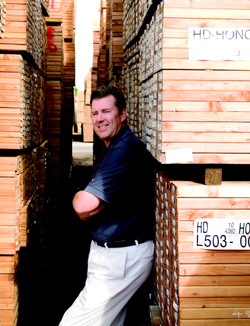Project-Minded A simultaneous focus on affordable housing, production builders, and the U.S. military has Honsador Holdings on top of the swells in the Hawaiian construction market.
“Hawaii landownership goes back to the days when the island was a kingdom,” explains Wayne Lincoln, Honsador Lumber’s vice president of sales and marketing. “Princess Bernice Pauahi Bishop, great-granddaughter of King Kamehameha, entrusted huge landholdings to fund a school for Hawaiian children, and then you have the Big Five—the Campbell estate, Brewer, AMFAC, Castle and Cook, and Alexander and Baldwin—that controlled sugar cane and pineapple production before they priced themselves out of the market. They all still control vast landholdings, and if you want to build in Hawaii, you’re gonna run into these people.”
Indeed, construction in Hawaii, perhaps more than anywhere else, requires first getting a lay of the land. Opportunities for high-end custom home margins abound in good times but dry up quickly when Asian or U.S. economies take a dive. The Hawaiian concept of o’hana, or family, leads to a secondary market more consistently reliable. By mandate, property and infrastructure on portions of state-owned land are set aside annually for commercial and residential use by Hawaiians with a 50% or greater native bloodline who lease the land for $1 a year for 99 years, but are required to build on it.
Besting a notorious permitting bureaucracy, Honsador has created the Island Homes collection, a series of seven entry-level project homes that include pre-designed and -approved plans and all the materials needed for construction. “No one here is looking for something fancy, they are not usually millionaires,” says Lincoln. “They need something in the low-100s that are turnkey and ready to go—these homes are designed to meet that need.” With o’hana cultural mores likewise prevailing over the permitting office, Island homes are also the perfect option for Hawaiian families looking to build second homes for family members on pre-existing lots, a common practice in the islands. The upshot for Honsador is participating in the kama’aina, (local and native-born) culture and also generating revenue—approximately 15% of annual sales are derived from the Island Homes line.
Not so kama’aina are mainland-based production builders, who arrived in the past decade and were top bidders as the Big Five began to sell off holdings in the bull real estate market. Centex, D.R. Horton, and Brookfield Homes are all in the Hawaiian market, and Honsador stands equally poised to meet their turnkey needs with roof and floor truss manufacturing on Oahu and the Big Island of Hawaii.
But arguably the state’s most influential landholder is the U.S. government. With all four armed forces branches maintaining large, active bases in Hawaii, the opportunity for military housing sales is a constant. While repair and remodel of base housing was always in the mix, the government pulled the trigger in 2004 on a 10-year rebuild of 12,000 housing units statewide.
And forget dealing with government bidding procedures—the build-out has been privatized to tract developers like Actus Lend Lease, with which Honsador already has long-standing sales relationships. Given that increase in volume, well-positioned companies like Honsador will be feeling the Ka’ana like with their tract builder customers. Literally translated, it means, “We share in the work, let us share in the joy.”

